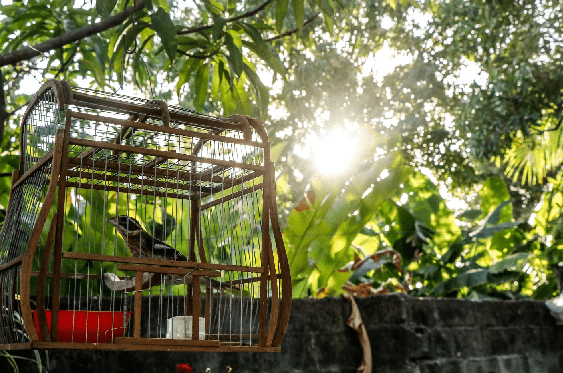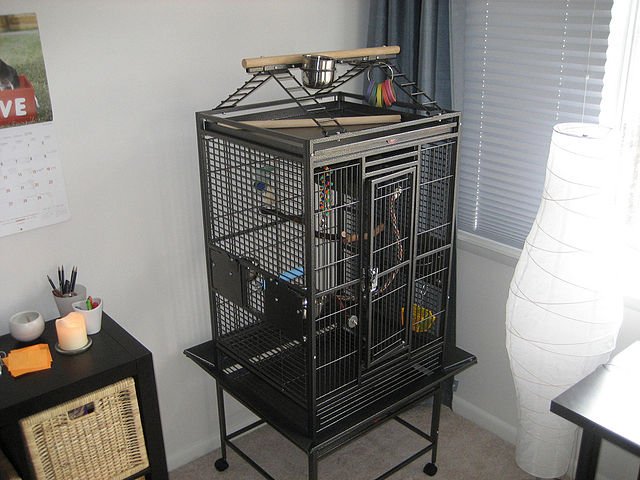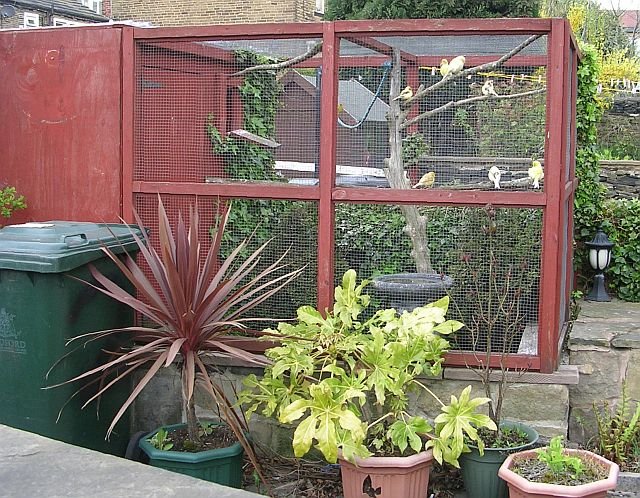Whether you have a Quaker, finch, or cockatoo, a pet bird is an enjoyable companion to have around. However, you must also provide your bird with everything it needs to live healthily and happily. So, if you are looking for the must-have supplies to put in your bird’s cage to keep your little friend comfortable and happy, we have some great and practical ideas to make your bird’s cage a happy place for your little feathered friend.
However, before we get right into our topic, let’s first pay attention to how to choose the right cage for your pet bird.
Pick a cage spacious enough for your bird
First thing first, the selection of a right birdcage is essential for all the upcoming supplies. It is toys, perches, or any other stuff; it will only be enjoyable for your feathered friend when the cage size is adequate. Surely, you would want not your little friend cramped in a cage that is too small.
Therefore, we will advise you to purchase the most spacious cage possible that will also fit fine into your home as well as fitting your budget. Generally, a cage that is at least twice as tall and double as wide as the full wingspan of your bird is a reasonable estimate to get a cage as it would also accommodate birds with a long tail.
However, there are many areas you will need to pay attention to when selecting a cage for your bird, and it also includes the species. For that, you can find many species-specific bird cages in the market. For instance, a finch would usually do best in a wider cage where they get enough room to fly. A 24″W x 24″ D x 36″H sizing would be more fitting for Quaker birdcage as they have an active nature which calls for a large enclosure.
Parrots and cockatoos, on the other hand, feel somewhat stressed in a rounded cage, so choosing a square or rectangular cage would do better and avoid stressing your pet.
Moreover, if you have small birds, you can easily carry the cage with hands, but if you have larger birds then it is better to get bird cage casters for the easy movability of the cage.
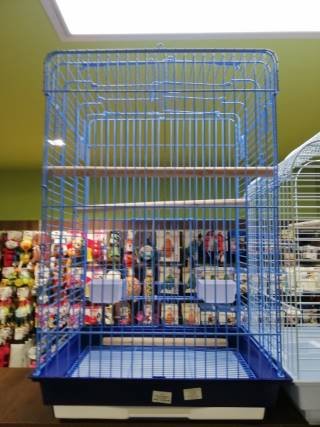
Choose a cage made from a sturdy material
Selection of the right bird cage does not end with merely purchasing a roomy cage; you will also have to be mindful of the material used and the bar spacing.
Bird cages are generally made out of metal, stainless steel, and wire. You can also find cardboard bird cages in the market. However, many cages also contain lead or zinc which you must avoid as they can be seriously harmful to your bird’s health as well as the members of the house. You will need to contact the cage manufacturer to ask about the material that was used to make the cage. Likewise, a cardboard cage is also not a good option because not only your bird will be able to destroy the cardboard and escape, but it could also ingest it and become ill.
Purchasing a bird cage is nothing short of an investment, so you must make sure to invest in a product that would last. For example, many bird cages rust or lose their finish over time. And you must know that rusty bird cage is not safe as birds bite and chew on the bars of their cage. So, if the metal is rusty, the birds will eat the rust which is toxic to birds and could also kill them. Opting for stainless steel will solve this issue as a stainless steel bird cage will last for years without causing such issues.
Alternatively, you can also get glass birdcages, they are safe for birds as they are too hard for them to scrape, chip, or break.
Appropriately spaced bars are essential
Another vital characteristic to consider while purchasing a bird cage is the bar spacing, which is also a matter of safety. Overlooking the bar spacing can cause severe damages like your bird getting its head stuck in the bars or may even escape and injure or kill themselves.
Thus, you must ensure the bars are appropriately spaced as different species need cages with differently spaced bars. For instance, for parakeets and cockatiels, bar spacing should not be more than ½ in (2.54 cm). For small birds such as finches, lovebirds, and canaries, you would want cages with bars that are spaced around 1.6 cm (0.63 inches) apart. For Lories, cockatiels, and Senegal, the bar spacing should be 0.5 inches (1.3 cm) to 0.88 inches (2.2 cm) apart.

If you have large birds like macaws, African Greys, and cockatoos 0.75 inches (1.9 cm) to 1.38 inches (3.5 cm) apart spacing will be proper. You can always ask a pet shop associate for the appropriate bar spacing for adequately housing the species of bird you have.
Now that we have gone through the essentials of cage sizing, materials, and bar spacing, it is the time to pay attention to the must-have bird cage supplies, you should embellish your little friend’s house with.
And the most important thing while setting up your bird’s space is to consider what would keep the beautiful little creature healthy and happy in the wild, then try to do some adjusting to provide that in your home. Here is what you are going to need to make that happen and why, according to the Association of Avian Veterinarians.
Get the Cage Liners
Cleanliness is vital for the health and happiness of your pet bird. You don’t have to be fancy on this one and can simply place newspaper, cage liner paper, or paper towel along the bottom of the cage (the mesh barrier) to make the clean-up easier and catch droppings.
Lacing the cages with grates positioned a few inches above the bottom of the cage is even better as it will prevent the birds from reaching their waste. It is advised to change the lining every other day and avoid the use of sand, cat litter, wood shavings, or other materials in the bottom of your bird cage.
Place food and water bowls in the cage
A bird’s gotta eat. So, yes, having a water and food bowl is indispensable. But before approaching to purchase food and water bowl, there are a few questions you must ask yourself which are;
- How many food bowls will the cage need?
- Would deep cups be better or the wider ones?
- Should the food bowl go on the floor or the side of the cage?
- Do the food bowls need hoods?
- Should you get a water bottle or water bowl?
Having answers to these questions is vital on so many levels. For example, if you have more than one bird, then the cage must have as many food bowls as the number of birds, and if possible, one extra. Having an extra pot is preferred as it will allow each bird always to have a choice of places to eat, and we all know how everyone feels more confident when they have options. Moreover, birds’ metabolism runs high; thus they should continuously have access to food during waking hours.
As far as the bowl placing question is concerned, you can go for a usual deep bowl or for dishes that hang from the side of the cage and are made for your bird to perch on. This is the type you will find in most pet stores and allow for easy refills and may be more favorable than placing a bowl on the bottom of the cage for many of you.
You can also get food and water dishes with a built-in perch and ledge that allow the bird to balance on, as it eats and drinks. Choosing wider cups would be better as that will inspire your bird to try new food items. However, do not place the perch too close to the bowls as your little friend may overeat or chew on his food dishes which obviously, are not healthy activities.
You can also get food bowls that are made with hoods and are aimed at minimizing mess and waste which would be great for you. However, some birds are afraid to get their heads into a hooded food dish as these seem somewhat dangerous if you look from the perspective of a small creature that is always on the alert for dangers. So, it may not be safe for many birds; therefore, you should do a test and place the hooded dish in, for some time and see your bird’s reaction.
As we come to the matter of water bowl or bottle, an open container of water can collect dust, food, or debris, while a water bottle does not have any of these drawbacks, but it runs the risk of getting blocked up. The best thing is to make both available at all times.

However, when purchasing a water bottle, you must make sure to get one that locks securely to the side of the cage. The water bottles that are marketed to be held to the cage with a ring of wire tend to slip.
Birdbaths for cages
Birds have many chances to bathe in the wild before they are captured and sold, so making sure to provide them with an opportunity to bathe in the cage will be really amazing (even if your bird is not among the captured ones) because birds love to bathe.
Thus, you must get birdbaths for cages and include a sturdy, heavy bowl that is short or medium length depending on the bird’s species, fill it with lukewarm water, and position it on the bottom of the cage. However, you will have to change the water regularly, and these baths also cause water spillage on the cage floor.
On the other hand, you can also get a bird bath that hangs from the side of the cage. Such baths avoid moisture from gathering on the floor of the cage.
Include perches for your bird
Birds, in captivity, stand on thee perches for most of the day and are a lot more critical for birds than a lot us may think. Birds are naturally curious creatures, and they usually want to keep an eye on what’s going around them, so it is best to give them comfort, and good material perches to rest, sleep and carry out activities.
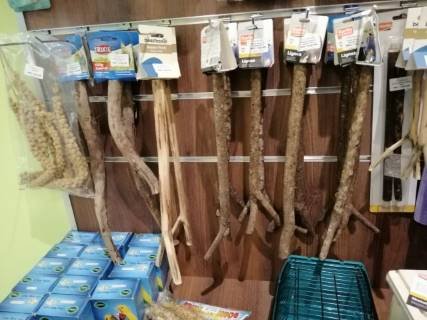
Birds like perches a lot and spend a lot of time enjoying them. Perches, like toys, are also a source of exercise for birds. Birds can climb around perches and can stretch in there to keep their muscles healthy and strong. So, provide your little friend with perches of varying heights, contours, and textures, and put them at different heights within the cage.
You can get perches made from different materials. It’s good to have a combination of rope perches, dowel perches, concrete perches, cuttlebone, and calcium perches so that they can sense different elements in nature. Cuttlebone and calcium perch not only induce beak and nail trimming, but birds also get the nutrients that make strong bones, proper muscle functions, egg development, and prevent common health problems, including egg binding.
However, getting an assortment of perches is advised, just like a variety of toys and a varied diet. It is because similar perches can create pain and swell in the joints known as arthritis, they can also cause bumblefoot in which the skin on their feet starts to wear down, and eventually it forms a hole which leads to infection that is very painful and dangerous if it goes untreated.
Light for bird cage
Birds also need and enjoy the light. Like a human, birds need UVB lighting for the production of Vitamin D3, the deficiency of which can cause rickets in birds. Therefore, getting light for bird cage if there is insufficient of natural sunlight is important. You can provide your little feathered friend the benefit of ultraviolet light by placing a broad spectrum UVA/UVB bulb about 12-18 inches above the cage.
Include safe toys for your bird
Toys are essential if you wish to make the birdcage a happy place for your pet. The reason behind this is that toys play a critically important role in both the mental and physical health of the pet birds.
By interacting with toys, birds can act out their natural urge to chew and to dig and search for things. Chewing on rawhide, soft white pine, leather chews (made for pets), or pine cones help to keep birds’ beaks in good condition, and the physical exertions keep their bones, muscles, and tendons in good condition.
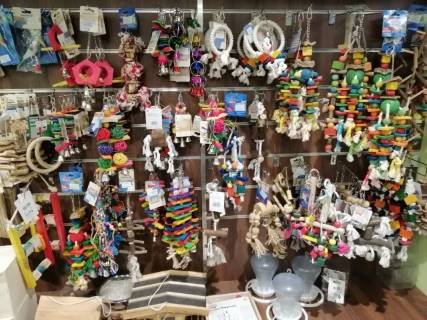
Mirrors, ladders, swings, and bells are good toys to put in your bird’s cage. You can also get wooden or rope toys in your bird’s cage to play with and chew on. However, always make sure to wash the toys often with mild soap and warm water. You must rinse them thoroughly and let them air dry fully before putting them back in the cage.
Because birds are intelligent and active creatures, they require activities and their interaction with toys not only stimulates their mind but also keep them active and physically engaged. Having no activity in the cage may cause boredom, which they may take out on their feathers, or become lethargic, depressed, and even feel unhealthy due to this.
Also, when birds are breeding, they tend to get a little bit feisty due to the imbalance of normal seasonal hormones in their bodies. The extra energy they get due to the imbalance of hormones needs to go somewhere, so the best way to spend their energy is playing with toys. It will calm those hormones and also lower their aggression levels.
However, make sure to avoid dangerous toys that are made from dyed leather or those with “S” hooks or small, removable parts that the birds may swallow. And also, make sure to set the perches far enough from the food and water bowls.
A Cuttlebone and Mineral Block
Having a cuttlebone and a mineral block in your bird’s cage will supply your little friend with needed nutrients as well as an opportunity to exercise his chewing instinct. If you have welcomed a bird into your home, you must know that a bird’s beak is continually growing.
Therefore, having an outlet for chewing will help wear it down. And the best part is that these items are fairly inexpensive while offering both benefits to your bird. Cuttlebone perches come in different flavors.
Include a hiding place for your pet bird
Privacy and a relaxed atmosphere are valued by every living soul, which also includes animals and birds. Your pet birds are continuously on display to the outer world, including humans and even other pets.
Simply providing a cover of your birdcage with a towel, or put nest for birdcage inside will allow them to enjoy privacy and feel safer having an escape hatch.
Inclusion of First aid
Like us humans, birds also need to have their nails trimmed, which makes it quite likely to see at least a little blood at some point in your bird’s life.
Therefore, keeping a styptic pencil, which will put a quick stop to bleeding if such a situation takes place, will be handy as a just-in-case item.
Whether you want to make sure your bird gets the comfort it deserves, or you are new to have owned a bird and looking for housing you pet in a suitable way, these bird cage supplies are essentials that are paramount to the health and happiness of your feathered friend. These supplies are inexpensive and straightforward but, will deliver abundant comfort for your pet.

